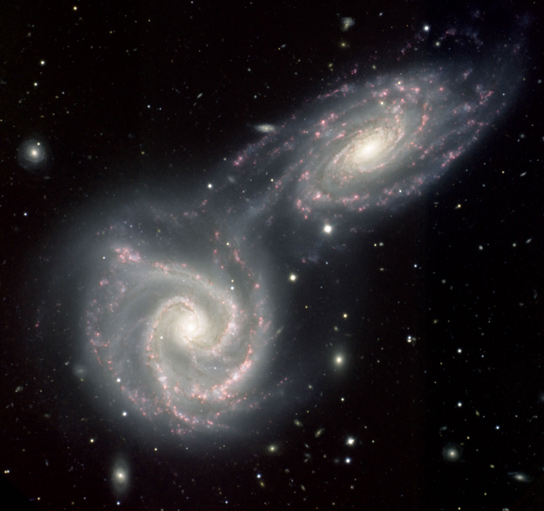 The Milky Way is the name of our galaxy. It contains of billions of stars, 8 planets, an asteroid belt, black holes, gas and dust, comets, and many other celestial things. This galaxy is a spiraled galaxy with a big bump in the middle with 4 spiral arms.
The Milky Way is the name of our galaxy. It contains of billions of stars, 8 planets, an asteroid belt, black holes, gas and dust, comets, and many other celestial things. This galaxy is a spiraled galaxy with a big bump in the middle with 4 spiral arms. Many people might not know this but galaxies are moving, including ours. Our solar system is moving with the Milky Way along with the things this galaxy contains. Our solar system moves at a tremendous speed of 828,000 km. per hour, circulating the whole galaxy in 230 million years.
In the middle of the galaxy, there is something called the galactic bulge which contains a ton of stars, gas, and dust. The gas and dust covers so much space of the bulge making humans unable to see a lot of the stars in the galaxy. In the very center of the bulge, there is a humongous black hole. It is WAY bigger than the sun and it feeds on the stars, gases, and dusts that goes in its path, growing huger and huger.
 |
| Andromeda (left) Milky Way (right) |
I have been thinking about our future for the past few days. What will happen to our solar system after the sun dies? Will there be another type of organism that will strive and live after the collision of the two galaxies? But I can't answer those questions. I don't think anyone can...
- Our solar system contains of 8 planets and 3 dwarf planets. For all you starters out there, the sun is in the middle while the following planets and 3 dwarf planets spin around it: 1. Mercury 2. Venus 3. Earth 4. Mars 5. Jupiter 6. Saturn 7. Uranus (lol) 8. Neptune 9. Pluto 10. Ceres 11. Eris. An asteroid belt divides the inner and the outer planets starting from Jupiter. (My favorite planet is Saturn. Don't know why.)
- Stars are hot spherical shaped objects in space and are made of about 70% hydrogen, 25% helium, and 5% of other elements. Stars that are red are called red giants. They are the least hot of all the different colored stars. Blue stars are the hottest of all stars.
- Black holes are like HUMONGOUS vacuums in space. Nobody knows where you go to when you get sucked into it. That's the scary part about black holes. I think that the only good part about them are that they keep space clean. (lol)

